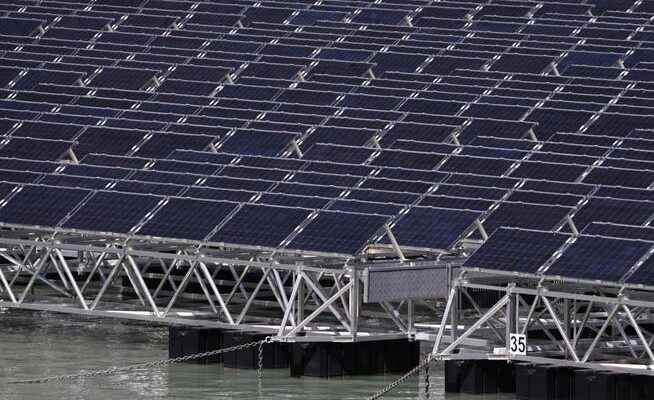With the law for alpine solar systems, a touch of China is blowing through Bern. This is not unproblematic, but necessary.
Large solar systems do not solve the whole problem, but they can make a contribution.
A liberal from the city, a conservative from the mountains and a leftist from another time meet. What sounds like the beginning of a bad joke could be the end of an interim era: Swiss energy policy is no longer centered on animals or the landscape, but on people again.
In the spring, the federal court had to decide in favor of a stone fly and stopped two planned hydroelectric power plants in the Lötschental. A characteristic judgment for the environmental politics of the last years. Politicians had literally turned flies into legal and administrative regulatory elephants – and in the process forgot to ensure electricity production.
Now Bundesbern is being caught up in reality. The balancing of interests and jurisdiction could quickly change again because the living space and the economy of the affluent society are threatened. Gas and electricity shortages are already threatening next winter, and a blackout would be the worst possible accident. With the largest assumed majority and with previously unthinkable maximum demands, the State Council Commission for the Environment, Spatial Planning and Energy (Urek) wants to combat the electricity shortage, especially in winter.
In order to enable huge solar systems in the Alps, the Urek proposes an urgent law. The Commission wants to largely undermine the spatial planning law, the environmental protection law and the law for nature and homeland protection and massively cut back the right of association to lodge complaints. Actually, only the E remains of the cumbersome acronym of the commission, the Urek becomes the EK, the energy commission.
The solar field planned for the southern slopes of the Saflisch Valley above the Valais village of Grengiols would be five square kilometers in size. Two terawatt hours of electricity are to be produced here as soon as possible and per year. This corresponds to the annual production of Grande Dixence, a hydroelectric power station with a dam almost 300 meters high. This was built in the 1950s, also in the Valais mountains. It’s almost like a work from a forgotten world. Can Switzerland still do major projects?
In order to answer this question, the councils will be faced with a large number of follow-up questions in the upcoming autumn session. What does the radical draft law mean for the round table on hydropower, where politicians, business and associations are hoping for the common method and trying to sound out good Swiss compromises?
Does the free pass for the panels suddenly also apply to the unwelcome wind turbines? On Tuesday, the Federal Office of Energy published a study it had commissioned to discuss the potential. The expected result: In winter, almost six terawatt hours of wind power could be produced in Switzerland, provided 1000 wind turbines are built.
And what good is Homeland Security? Should all the old houses be replaced with similar blocks of flats in order to be able to cope with immigration?
With the radical legislative proposal, a breath of China is blowing through the federal Bern. This is not unproblematic and shows how great the needs of politics have become. The alliance was also created out of necessity, which made the project in Grengiols capable of winning a majority in the first place.
FDP member of the Council of States Ruedi Noser has the entrepreneurial furor, his middle colleague Beat Rieder has the legal competence, former SP President Peter Bodenmann had the idea – a liberal from the city, a conservative from the mountains and a leftist from another meet Time. Perhaps it is the beginning of a rethinking back to pimp-hard and democratically sensitive pragmatism. Perhaps that is necessary in the current situation – like back then, when walls almost 300 meters high were built in the mountain valleys.
